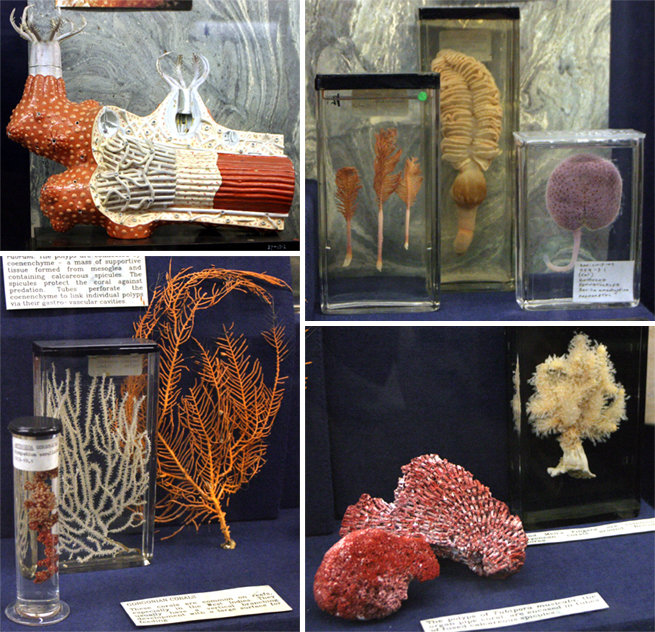Model of Corallium rubrum, the precious red coral, reveals the structure of the subclass Octocorallia. The polyps are connected by coenenchyme – a mass of supportive tissue of mesogloea with calcareous spicules which protect the coral from predation. The gastrovascular cavities of individual polyps are linked by tubes through the coenchyme.
The in-shore sea pens and sea pansies live on soft sandy substrates. They have a large contractile primary polyp – elongate in sea pens and leaflike in sea pansies – which serves as a stalk and for burrowing. Secondary dimorphic polyps occur on the branches of sea pens and the fleshy lobe of sea pansies. Autozooids feed the colony; siphonozooids keep it erect by pumping in water.
Dead Mens’Fingers are common Alcyonean corals around British waters. The polyps of Tubipora musicata, the organ pipe coral, are encased in tubes of calcareous spicules.
Gorgonian corals are common on reefs especially in the West Indies. They usually have a vertical branching development with a large surface for feeding.

